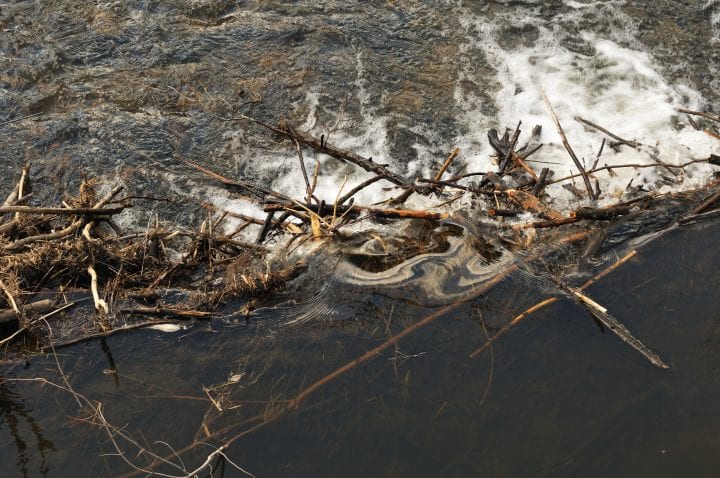First Place - High School
UN Sustainable Development Goals Addressed
-

Goal 11: Sustainable Cities & Communities
2022 Youth Design Challenge
This design concept was developed by participants in the Institute’s Youth Design Challenge. The descriptions below are from the team’s competition entry materials.
School: Homeschool
Location: Edmonds, WA, USA
Coach: Jennifer Johnson, April Osborne
Team members: Annika Johnson, Kellen Osborne-McKenna
Video Pitch

Innovation Details
To take on a local urban flooding issue, team Garage School Scholars out of Edmonds, Washington looked to mangroves and beavers to help people in their community living near Shellabarger Creek. Their Urban Floodwater Reduction System slows down water by splitting up the flow and creating tortuous paths; creates blockages to flood-designated areas upstream; and negates the amount of energy the water carries as it flows downstream towards the house most affected by the creek’s flooding.
The design was awarded first place in the high school category because of its local scale with life-friendly materials integrated into the local community. The team offered a well-researched, tested, and prototyped project that aligned well with SDG 11 (Sustainable Cities and Communities) and demonstrated a thorough mimicry of the biological organisms chosen.
What is the problem your team solved for this challenge? What is the problem addressed? How is the problem connected to the selected SDG?
Our team tackled a local urban flooding issue. Shellabarger Creek jumps its bank and floods homes during heavy rainfall events. Due to climate change, this issue has gotten progressively worse, and flooding has become more detrimental and frequent. This problem affects people in our community like Nick and Erica, homeowners that live near the creek. The City of Edmonds has tried unsuccessfully to fix the problem and Nick and Erica spend physical and emotional energy to keep their home safe. Our project connects to SDG 11, and focuses on community disaster risk reduction.
How was your solution inspired by nature? What (at least two) organisms did you learn from? How effectively did you combine the biological strategies for the final design?
Our solution is inspired by mangroves and beavers. Structures inspired by mangrove roots would be placed in the creek to slow and redirect water during a sustained rain event. These complicated interlacing structures would create a large amount of drag on the water, slowing the velocity. Over time, debris would build up against the structures, creating an effect similar to that of a beaver dam. Water would back up and pool in the watershed, thus becoming less of a danger for houses downstream. With inspiration from mangroves and beavers alike, our design mitigates damage from urban flooding.
What does your design solution do? How does it solve or mitigate the problem you selected? How did what you learn inform your design?
Our design solves our city’s local flooding problem, especially for local homeowners Nick and Erica. Because of the nature of these urban flash floods, slowing the velocity of the water in the creek keeps it within its banks and allows the city system to function effectively. Flooding the watershed keeps the downstream houses safe. Our mentors helped us understand the constraints of the project, while asknature.org inspired us to create our Urban Floodwater Reduction System which can be scaled up for use in larger urban creeks.


